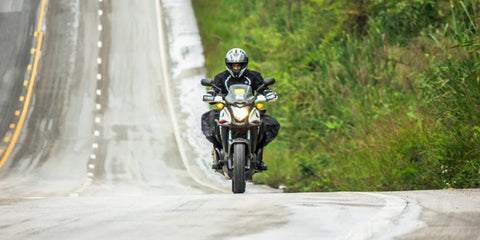Everything You Need To Know While Buying Soft Motorcycle Luggage
Most of our customers today tell us that they have a hard time making a choice when it comes to soft motorcycle luggage. 10 years ago, it was a nightmare because you didn’t have too many options, but today? Well, at last count you had over 50 models and numerous brands to choose from, in India!
So, when buying motorcycle luggage, are there any factors to base your decision on, other than features, the price and the type of bike you ride? In our opinion – yes. When you buy a product that’s meant to last, something that needs to stand by you through the vagaries of the weather, rough use, and terrain, you need to have a basic understanding of what you’re purchasing… that goes beyond the design, colours etc.
While you don’t need to know everything about luggage manufacturing, here are a few aspects that you should definitely check out when buying luggage:
FORM FACTOR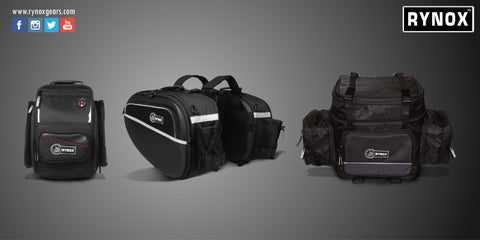
Basically, soft motorcycle luggage comes in 3 types – tank bag, saddlebags and tail bag. Every type serves a specific purpose and as the names suggest, is mounted on a specific part of the bike. Though their application is more or less fungible, it makes more sense to know exactly what type of bag you want, and why.
MATERIAL
Like all other gear, motorcycling luggage is made from a variety of fabrics and material – based on different required strengths, ease of craftsmanship, costs, and the type of weather/terrain the product is intended to survive. You refer to these materials primarily as waterproof/non-waterproof, plastic/cotton etc, but we believe you need to know a little bit more than that.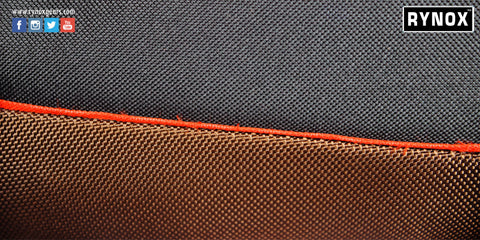
The base fabric that your product is made from is the most critical aspect that you need to look at. We use 1680D PVC Coated Polyester Fabric, which is the standard in all our luggage. D stands for Denier or the weight of individual strands of fiber/yarn. This fabric is basically a lighter and more appropriate alternative to the 1050D Nylon Ballistic fabric (Which was the original fabric used to make bulletproof vests etc, before Kevlar came along). Hugely abrasion resistant, the PVC coated version we use in Rynox luggage also contributes to the water resistant properties of the luggage. The basket weave of the final fabric (which basically means closely knit) is what makes this fabric resistant to tearing. For example, a 600D fabric woven tightly in an intricate manner will be stronger than one with a higher Denier strength but woven loosely. What this means is that when you hold the fabric up to a light source, a tightly woven fabric will not let the light through it, but a loosely woven fabric will allow you to see pinpricks of light through the fabric.
When you check the fabric quality ask for the Denier of the fabric, but also ask about the weave(and check it yourself).
OTHER PARTS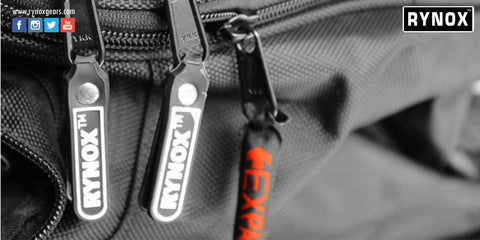
You may not have realized it, but there are approximately 10-15 other types of parts that go into most soft motorcycle luggage systems. Zippers (sliders and runners), mesh, pockets, the thread used for the stitching, clips, buckles and straps are only a few of them. Let’s take a case in point. If you have gone through some product descriptions, you’ll notice that most companies claim to use YKK Zippers. YKK Zippers are the industry standard, and the sliders come with a YKK mark on them, which is something you should check for before you buy. Make sure you also ask your distributor or seller whether the runners are also YKK. By the way, YKK also makes “Hook and Loop” systems (more commonly known as Velcro, but Velcro is actually a brand), clips, buckles etc. Our point is, do the research before you buy, and the bag won’t let you down.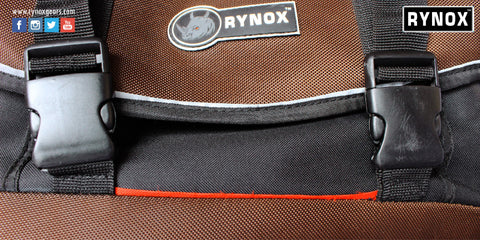
CRAFTSMANSHIP
At Rynox, we’re lucky to have the inputs of people who’ve been in the luggage industry for over 30 years. This makes a very big difference to how we build (and test) our luggage. In our opinion, testing a bag is as important building it. That’s why we debate upon our new product designs for almost 6 months – up to 1 year before getting into production, and why we test extensively under varied conditions on many different bikes before actually launching a product.
When it comes to the actual design and production, here are a few tips to help you choose better
- Look for luggage with wider seams. By this, we mean that there should be sufficient material on the inside of the seam to prevent the seam from pulling apart. Simple, yet many designs skimp on this as it means making different cuts and using more material.
- Look for double stitching and reinforcements at pressure points. While the fabric of the luggage should be strong in itself, it is important to have the fabric reinforced at critical places. This makes a difference to the product’s life.
Check up these three points to make sure that the bag has been constructed in the best way possible. So it’s a pretty good bag, now you need to see if it’s a good bag for your bike?
FIT
Make sure the bag is going to fit perfectly on your bike. Some bags are made specifically for specific bikes, while some bags are made to fit universally on any bike. Even if the bag is constructed beautifully, if it doesn’t fit properly on your bike, you are sure to have an unpleasant experience.
VOLUME
Before you buy any bag, be sure of what kind of use you’re going to put it to. Is this your primary bag? Or is it a bag that’ll supplement your primary bag? Or will you be using this bag only on long rides? Or weekenders? Simply put, be sure of how much, or how little luggage you’re generally going to put intothe bag you are buying.
SPACE UTILISATION AND POCKETS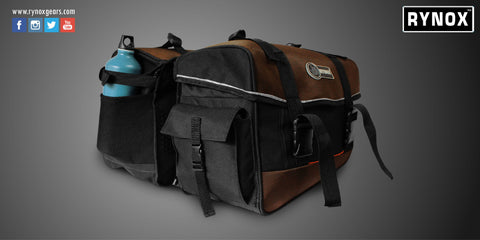
Between 2 bags of the same volume, it makes better sense to go for a bag that has more pockets and utilizes its volume in a smart way. A bag with no external pockets will compel you to open up the main compartment even for the smallest things.
EASE OF LUGGAGE LOADING
Its important that the design of the bag and the placement of the zipper allow for easy loading and unloading of luggage on and off the bike. Go for a bag that lets you take out that toolkit from the bag, put it back and then close the zippers without too much hassle.
REFLECTIVITY
Look for reflective elements on the bag that add to its visibility in low light.
We know that what we’ve described here is more or less hygiene, and many manufacturers do follow most (or all) of these principles. But this guide is intended to help you understand how luggage is built and constructed, so you’ll know what to look for and what you’re buying into. We hope it’s useful. If you feel like we’ve missed anything important, or you would like to understand this in a little more detail, get in touch by writing to us here.
www.rynoxgears.com
#Rynox #RideWithReliability